A guide to working capital funding for small and medium-sized businesses
Date
03 November 2023
Share

As the New Zealand economic climate fluctuates, business income can become challenging to rmonitor and alternative solutions are becoming more popular.
A guide to working capital funding for small and medium-sized businesses
It's no secret that cashflow is essential for day-to-day business operations and growth goals. Businesses cycle through periods where cash can be difficult to manage and having access to additional working capital could make a significant difference. As the New Zealand economic climate fluctuates, business income can become challenging to regulate/monitor and alternative solutions can become more popular. Finance New Zealand has relationships with a range of working capital funders. If you need working capital to pay invoices or purchase equipment, we can provide a solution that fits your short-term and long-term needs.
Which working capital solution is right for you?
Working capital & cashflow options range from traditional banks to Fintech lenders to invoice financiers. All of these have their own benefits and costs. It's important to consider your objectives, business projections, and exit strategy when exploring these options. With access to a range of working capital lenders, we can place your request at the time that suits your needs, whether it's speed or flexibility.
How do working capital lenders differ?
Working capital options are dependent on the size, situation, and needs of your business.
Traditional banks
Relying on your transactional bank, depending on your relationship with them, can offer comfort in difficult times. The most common working capital product they offer is an overdraft facility. They allow you to draw funds as you need them, not when your customers pay their invoices. And once you’ve paid it back, you'll still have access to it if you need it again. It charges interest on drawn funds, though banks often charge a “line fee” based on the facility limit. However, it’s not without its conditions. Firstly, your bank will likely need to secure the facility. For small businesses, the bank will typically take a General Security Agreement over the business. However, its main security is usually property assets owned by the borrower, or by guarantors. For small to medium-sized businesses, this often means the family home is the underpinning security. This means that sometimes your property value will determine your limit, not your business needs.
Larger businesses who are well established with strong financial performance and balance sheets, will tend to have a wider range of main bank working capital and cash flow products. Banks are generally more willing to lend to these entities without property security.
Pros:
- Can provide “temporary” short-term overdraft facilities for existing clients.
- Market interest rates are typically lower than alternative forms of working capital funding.
- Provided the client risk profile is acceptable to the lender, and adequate security is available, traditional banks can accommodate large working capital facilities.
Cons:
- Security is usually supported/secured by property assets. It can be difficult to obtain overdraft facilities without property security.
- Guarantee structure often includes Directors and Shareholders, e.g. Family or Trading Trusts.
- It can take longer to obtain formal approvals for ongoing or permanent increases in working capital facility limits.
- The lender assesses financial information extensively relative to non-bank options.
Our traditional bank funding partners:
- ASB
- BNZ
- Kiwibank
- Westpac
Fintech lenders
As traditional banks can be quite conservative, require property security, and have relatively slow response times, non-bank lenders can step in to fill that gap. The last five years have seen the emergence of various non-bank Fintech lenders. They can offer working capital solutions to keep cash moving and relieve pressure. These lenders use algorithms to assess applicants’ debt servicing affordability and lend based on confirmed income via bank statements. Fintech lenders are very quick, which is helpful for unforeseen expenses. These products can be standard term loans – where you borrow a specific amount over a set time, or they could offer a line of credit, which acts similarly to an overdraft, where you can draw and pay back funds as required. These options are quick and can provide options where no property security is available, but they tend to be more expensive. Interest rates are typically significantly higher than traditional bank funding.
Pros:
- Fast access to working capital.
- Access to capital without using property as security.
- Can be an effective short-term solution to a short-term problem.
- Allows businesses to quickly scale to chase growth opportunities.
Cons:
- Higher interest rates and fee structure.
- Potentially high early repayment costs.
- Funding offered can be low.
Our Fintech funding partners
- Bizcap
- CFI
- Get Capital
- Prospa
Invoice finance lenders
Managing cash flow is complicated and requires an intimate knowledge of how your business runs day-to-day as well as your plans for the future. The more you sell, the more you buy in, all of which constricts cash flow, adding to stress. If you’re growing quickly and experiencing cash flow challenges, invoice finance may be exactly what you need.
Invoice finance can free up cash flow to invest in your business. As you issue your clients' invoices, the invoice financier pays you an agreed percentage of that invoiced amount. This is typically up to 70% to 80% of the debtor's value. As each debtor pays the invoice the amount borrowed is repaid to the invoice financier. The remaining invoice value less the financier's fees is available to your business.
You have two options when considering invoice finance - disclosed or undisclosed.
Disclosed facilities often lend a higher percentage of the outstanding balance. They can even chase your outstanding receivables. For SMEs, this can be incredibly helpful and take some pressure off as you will know your payments will come in as required. However, this does not suit everyone, as it informs your clients that there are other parties involved.
With an undisclosed facility, you remain in control and at the forefront of your client connections. However, the percentage of funds lent on each debtor invoice will be smaller and the financier may be more conservative about risk.They normally lend to more mature businesses with competent administrative systems and controls and good quality financial information.
By using invoice finance, you can access funds based on your turnover and debtor book rather than your property security. This form of funding is typically more expensive than main bank overdrafts, but less expensive than fintech lending.
Pros:
- Fast access to working capital.
- Access to capital without property as security.
- Access to working capital increases as turnover increases. Excellent for fast-growing businesses where a lack of working capital holds them back.
Cons:
- Invoice finance lenders often need security priority over accounts receivable which banks can sometimes be reluctant to grant.
- Risk of default remains with the client. If the invoice is unpaid, lenders will claim back what they advanced against that client.
- Typically more expensive than traditional bank working capital that is secured by property.
Our invoice finance funding partners
- Fifo
- Fundtap
- Lock Finance
- Pacific Invoice Finance
- Scotpac
The working capital solutions outlined above are just a few options available when cash flow tightens up. Additionally, we offer businesses equity access against property and machinery assets to shore up their working capital.
Contact your Finance New Zealand adviser today to explore working capital options or other finance solutions.
Similar Posts
07 February 2024
Business finance news: The finance sector regulatory environment
Many businesses will welcome a change in government to one seen as more business friendly. Within the financial sector we expect to see the following impacts in the short term:

07 February 2024
Business finance news: The domestic economy
Business confidence has improved since late 2023 but remains a mixed bag. This mirrors what we are seeing across our own business. As we have returned from summer holidays, there seems a more optimistic attitude within our client base.


Page Links
Contact us
Finance New Zealand Limited L11 BDO Tower, 19-21 Como Street, Takapuna, Auckland 0622 PO Box 65164, Mairangi Bay 0754 T: (09) 222 0320E: info@financenz.co.nzMember of


Proud Sponsors of Auckland Rescue Helicopter Trust
Copyright Finance New Zealand Ltd 2024



